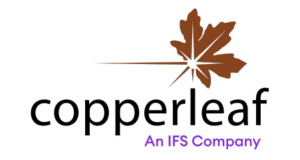Design Thinking @ Copperleaf
Earlier in our Design @ Copperleaf series, we announced the release of the Copperleaf Design System and reflected on our experience hosting best-selling author Jake Knapp for a Design Sprint masterclass. Today, we explore how design thinking helps Copperleaf focus on the big picture, practice continuous improvement, and ensure we deliver products with an exceptional user experience.
Design Thinking: The Fuel
What exactly is “design thinking”? According to IDEO, it is “a process for creative problem solving that encourages organizations to focus on the people they’re creating for, which leads to better products, services, and internal processes”. Design thinking approaches problems from a human perspective, making sure user needs are central to the solution.
At Copperleaf, we believe design thinking is one of the key differentiators that will keep us at the forefront of innovation in the enterprise software space. Our design team, as well as several other departments, have implemented design thinking to encourage collaborative interaction between teams, and continuous feedback between developers and target users. It encourages an agile method for product development that is uniquely focused on clients, and is the fuel that enables us to continuously innovate.
Design thinking is a human-centered approach to innovation that draws from the designer’s toolkit to integrate the needs of people, the possibilities of technology, and the requirements for business success.
Tim Brown
President and CEO
IDEO
Design Thinking @ Copperleaf
Design thinking requires a curious mindset and the right tools for the problem you’re trying to solve. The product development and design process at Copperleaf leverages user-focused design thinking, enabling the user to achieve their goals while delivering business value with product enhancements.
Recently we have found success with the following tools from the design thinking toolkit:
User interviews: we interview real-life clients, which helps us to reframe our assumptions with data, and allows us to be more confident that our solutions will align to user expectations.
Co-creation sessions: we bring together a diverse group of individuals from our design, development, and product teams, which enables us to produce quick iterations and leads to a more feasible, viable, and desirable solution.
Service blueprints: we use service blueprints to understand how a single task can impact multiple user journeys within our solutions. Our goal is to ensure that a feature for persona A does not impact persona B in a negative way. Mapping this out encourages us to create something that impacts each user positively in their day-to-day experiences.
Qualitative and quantitative user testing: we conduct user testing using various methods and formats in order to determine the right size of tool for the problem. For example, when making significant changes to how our application works, we look towards quantitative user testing to ensure we are making the right decisions and backing that with statistically significant data.
It is essential to identify, design, and build solutions that effectively solve users’ problems. Organizations must prioritize and invest in the creative design process to avoid expensive delays, gain competitive advantage, deliver exceptional customer experiences, and uphold employee morale.
Forrester
The Total Economic Impact™ of IBM’s Design Thinking Practice, February 2018
Generally speaking, a curious mindset is vital for innovation in product development. We want to approach problems from our clients’ perspective, and we need to be inquisitive at every step of product creation: from initial research and conceptualization, to deciding which functional features to include or exclude, to finalizing a new feature or product.
At Copperleaf, we have numerous business groups involved in each of our projects, and alignment with stakeholders—both internal and external—is crucial in determining the success of a product. Design thinking ensures we put our clients’ experience first, encourages risk taking and creativity, allows us to validate our assumptions with both qualitative and quantitative data, and ensures our teams are spending time on the right things. Ultimately, we all need to embrace the common goal of bringing a product to market that will maximize value for our clients.
Check out more of our Design @ Copperleaf blog series which explores how we leverage design thinking to drive new ideas, empower our people to take risks, validate assumptions, and retain our competitive advantage.

